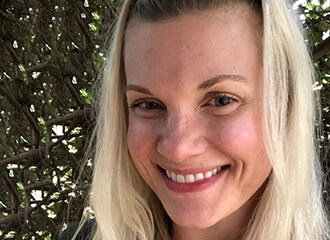Written By: Mehak Merchant, MS, APC, NCC
Primary Therapist at The Renfrew Center of Georgia

Advocacy is also about empowering individuals within BIPOC communities. Real change requires a collective effort. Awareness must be raised at every level, within the healthcare system, among providers, and within communities themselves. Together, we can work toward creating safer, more inclusive environments where BIPOC individuals feel empowered to seek help, share their experiences, and begin their journey toward healing.
Prevalence & Statistics
(Adapted From National Eating Disorder Association, NEDA)
Research highlights significant disparities in eating disorder prevalence, diagnosis, and treatment among different racial and ethnic groups. BIPOC individuals are more likely to engage in disordered eating, yet people of color are less likely to receive proper diagnosis or treatment. The following statistics illustrate these inequities:
- A 2019 study found that Hispanic/Latino, Black/African American, and Asian American individuals are more likely to engage in disordered eating behaviors compared to their white peers.
- A recent study revealed that white participants represent about 70% of those in eating disorder research, highlighting the underrepresentation of non-white groups in these studies.
- Adolescents who experience racial or ethnic discrimination are three times more likely to develop binge eating disorder compared to those who do not face such discrimination.
- The societal preference for lighter skin tones is linked to body dissatisfaction and binge eating among Black girls.
- People of color with eating disorders are half as likely to be diagnosed or receive treatment compared to their white counterparts.
- Youth of color are less than two-thirds as likely to receive recommended treatment for eating disorders when compared to white youth.
Understanding the Need for Advocacy in BIPOC Communities
As a South Asian immigrant and clinician with experience across various levels of care, I often find myself navigating the delicate balance between hope and frustration. On the one hand, I see opportunities for progress and change. Yet, on the other, I am confronted with the stark, persistent disparities that continue to shape the lives of many.
For individuals within BIPOC communities, the stigma around mental health and eating disorders can make it difficult to seek help. Many individuals have shared how pressures of assimilation, the need to “fit in,” and how the weight of societal judgment have influenced their struggles. As one patient powerfully shared, “I knew I would never be white, but I could always be thinner.” In that moment, I realized that we weren’t simply discussing body image; what we were exploring was far more profound: the armor that individuals of color are often compelled to wear in order to survive in a world that frequently marginalizes them.
For professionals, this means understanding that body image is not merely about size, weight, or shape. For BIPOC individuals, body image is intricately tied to a deeply rooted, often painful history of racism and colonialism. Addressing this requires recognizing that the struggle goes beyond appearance, calling for a deeper exploration of racial trauma. For community members, it’s about creating spaces where individuals feel safe discussing these complex experiences without judgment.
READ MORE: Virtual BIPOC Eating Disorder Support: What It Is & Why It Matters
Breaking Down Stigma and Misconceptions
One Measure Does Not Fit All!
The BMI (Body Mass Index) was developed in the early 19th century by Belgian mathematician Adolphe Quetelet, a white European, who designed it as a tool to measure the “average” body shape of the European population. As a result, the BMI’s “ideal” weight reflects a European body type, making it not only irrelevant but also potentially harmful for people of other races. Research shows that individuals of color are more likely to engage in disordered eating behaviors than their white counterparts (Simone et al., 2022), yet they are half as likely to receive a proper diagnosis or treatment (Sonneville et al., 2018). This disparity is partly due to the overuse of BMI as a clinical tool, which has been criticized for reinforcing racial and weight biases (Strings, 2023). The BMI’s historical roots in racialized fatphobia continue to perpetuate harmful stereotypes and misdiagnoses, especially for people of color.
As eating disorder professionals, we must raise awareness of the BMI’s racist history, educate both patients and providers about its impact, and reflect on how Eurocentric standards continue to harm individuals of color. Community members and families also play a key role by supporting BIPOC individuals in questioning and challenging these harmful standards. They can offer emotional support and help create environments where cultural diversity and body acceptance are celebrated. Additionally, they can seek culturally competent care, advocate for proper diagnosis and treatment, and provide ongoing emotional support during recovery. By working together, families and communities can help challenge harmful norms and create more inclusive, supportive environments.
Cultural Stigma
A common misconception is that eating disorders primarily affect white populations. This false narrative contributes to the underdiagnosis and misdiagnosis of eating disorders in BIPOC individuals. Additionally, in many BIPOC communities, mental health is often stigmatized, leading to silence around these issues. The fear of judgment and lack of culturally competent care can make it difficult for people of color to seek help.
As mental health professionals and advocates, it’s crucial to challenge these misconceptions and the stigma that prevents healing. While creating awareness in communities and demystifying eating disorders is important, we must also examine our own spaces and be curious about how we can be more inclusive and affirming. Challenging misconceptions, much like creating safer communities, starts with us as providers and allies.
Acculturation & Shame
In many communities, food is more than nourishment; it represents community, connection, and celebration. In treatment, it’s essential to understand an individual’s relationship with food within the context of their culture(s). For those navigating two or more distinct cultures, this landscape becomes even more complex. Eating disorders are often a response to emotional experiences that can be hard to express, and one emotion frequently arising in my work with patients is shame.
When we look at shame through a cultural lens, it becomes clear that it’s not just about food – it can affect deeper aspects of one’s identity. Many individuals in BIPOC communities have shared experiences of being shamed for bringing traditional meals from home, often leading them to skip meals to avoid judgment from others. This feeling of shame continues into adulthood, affecting how they view foods from their culture in comparison to Western foods. Some may internalize the belief that Western foods are “better” while foods from their heritage are seen as “bad” or “unhealthy.” This additional layer of shame complicates the healing process, as individuals must navigate not only societal pressures around body image, but also cultural stigmas attached to their traditional foods.
As culturally competent, trauma-informed providers, we must recognize the trauma of being ostracized and understand how it affects a person’s relationship with their identity and food. We must work collaboratively with patients to learn about these intricacies and incorporate them into treatment planning.
The Role of Professionals and Community Partnerships
One powerful way to advocate for eating disorder awareness is by partnering with BIPOC-led organizations. Collaborations can foster the creation of resources that are culturally relevant and amplify the voices of those directly impacted by eating disorders. These partnerships may include supporting grassroots initiatives or forming alliances with organizations focused on mental health advocacy in BIPOC communities.
Expanding Treatment Options
To advocate for eating disorder recovery in BIPOC communities, it’s crucial to ensure that treatment is both culturally competent and trauma-informed. Western standards of care often assume an expert role that can exacerbate power imbalances; instead, we must foster collaboration and approach treatment with cultural humility. This involves being genuinely curious about a patient’s identity and exploring it in a way that feels mutually respectful and collaborative. As providers, we should take the initiative to learn about colleagues with diverse identities to better coordinate care that meets our patients’ needs. Community-based therapy, telehealth options, and support groups tailored for BIPOC individuals offer more accessible, comfortable, and culturally resonant paths to recovery.
Advocating for Policy Change
Eating disorder symptoms often intensify due to stress, and for BIPOC individuals with intersecting identities, systemic factors and harmful legislation can exacerbate these challenges. As clinicians and providers, our advocacy goes beyond raising awareness; it requires reflecting on how we can contribute to systemic change. This might involve something as straightforward as educating a colleague, medication provider, or insurance representative about the harm of using BMI to assess the need for care. On a larger scale, it could mean advocating for a critical reexamination and overhaul of diagnostic tools to ensure they are more inclusive and accurately reflect the needs of diverse populations.
READ MORE: BIPOC Mental Health Month: The Best Mental Health Learning Resources
Improving Access to Treatment
Significant barriers continue to limit access to treatment for BIPOC individuals. Many face financial constraints, lack of insurance, and limited access to culturally competent care. Raising awareness about the prevalence of eating disorders in treatment facilities and within the community can help generate support for resources that are specifically tailored to the unique needs of BIPOC individuals. Increasing awareness can foster stronger community support networks, where individuals can connect with others who share similar cultural backgrounds and recovery journeys. This solidarity is essential for healing, as it cultivates a sense of belonging and hope.
Empowering Self-Advocacy in Therapy
For BIPOC individuals navigating treatment, self-advocacy can be an empowering step toward healing.
- Celebrate Your Cultural Identity: Understand the role of cultural foods and traditions as strengths in your recovery, not obstacles.
- Understand Your Rights: Know that you can request providers who are culturally competent and trauma-informed.
- Ask Questions: It’s okay to ask your provider about their experience working with BIPOC clients or share how your identity impacts your treatment needs.
- Incorporate Community Support: Your cultural and social networks can be integral in your healing process. Don’t hesitate to bring up the importance of community, family, or spiritual practices in your treatment plan, as these elements can strengthen your overall wellbeing.
- Advocate for Culturally Adapted Treatment Modalities: A treatment plan that incorporates culturally relevant practices, such as spiritual healing, traditional healing methods, or community-based interventions, can be effective and meaningful for your recovery.
Conclusion
In conclusion, advocacy starts with us. To create meaningful change in eating disorder treatment, we must confront the deep-rooted disparities that continue to impact BIPOC communities. This requires offering culturally competent care, challenging biases, and addressing the historical injustices that shaped treatment – and acknowledging the experiences of BIPOC individuals recovering from eating disorders. By creating spaces where BIPOC individuals feel heard and supported, we can begin to break down the barriers to healing.
Representation matters in recovery. Contact Renfrew today to find providers who understand the unique challenges BIPOC individuals face.
BIPOC Mental Health Resources
Below are several resources to utilize as we work to increase awareness and foster a stronger sense of community around mental health within BIPOC communities.
Mental Health Resources
- Loveland Foundation: The Loveland Foundation is committed to showing up for communities of color in unique and powerful ways, with a particular focus on Black women and girls.
- Therapy For Black Girls: Therapy for Black Girls is an online space dedicated to encouraging the mental wellness of Black women and girls.
- Mental Health America: To support BIPOC Mental Health, you can check out Mental Health America’s toolkit, which includes a multitude of trusted resources and factsheets.
Specific Directories of Therapists
- Association of Black Psychologists: Founded in San Francisco in 1968 by a group of Black Psychologists from around the country. They united to actively address the serious problems facing Black Psychologists and the larger Black community.
- Latinx Therapy: Founded in 2018 with the mission to destigmatize mental health in the Latinx community.
- Melanin & Mental Health: Melanin & Mental Health connect individuals with culturally competent clinicians committed to serving the mental health needs of Black & Latinx/Hispanic communities.
- National Queer and Trans Therapists of Color Network: NQTTCN is a healing justice organization that works to transform mental health for queer and trans people of color.
- South Asian Mental Health Initiative and Network: SAMHIN, was formed in 2014 to address a broad range of mental health needs of the growing South Asian community in the United States.
- Asian Mental Health Collective: AMHC aspires to make mental health easily available, approachable, and accessible to Asian communities worldwide.
- Clinicians of Color: A directory that makes finding a therapist of color easier.
Books
- Maybe I Don’t Belong Here: A Memoir of Race, Identity, Breakdown and Recovery by David Harewood
- My Grandmother’s Hands: Racialized Trauma and the Pathway to Mending Our Hearts and Bodies by Resmaa Menakem
- Crying in H Mart: A Memoir by Michelle Zauner
- Therapy Isn’t Just for White People by Kiara Imani
- But What Will People Say?: Navigating Mental Health, Identity, Love, and Family Between Cultures by Sahaj Kaurkohli
- Iveliz Explains It All by Andrea Beatriz Arango
- Eating Disorders Don’t Discriminate: Stories of Illness, Hope and Recovery from Diverse Voices by Dr. Nwuba, Chukwuemeka (Editor), Bailey Spinn (Editor), Janet Treasure (Foreword)
- Fearing the Black Body: The Racial Origins of Fat Phobia by Sabrina Strings, PhD
Podcasts
- Between Sessions Podcast
- AFFIRM
- Stories of Stigma: South Asian Mental Health
- Latinx Therapy
- Therapy for Black Girls Podcast
- Episode #204 with Paula Edwards-Gayfield, LCMHCS, LPC, CEDS-C, BC-TMH about body image.



